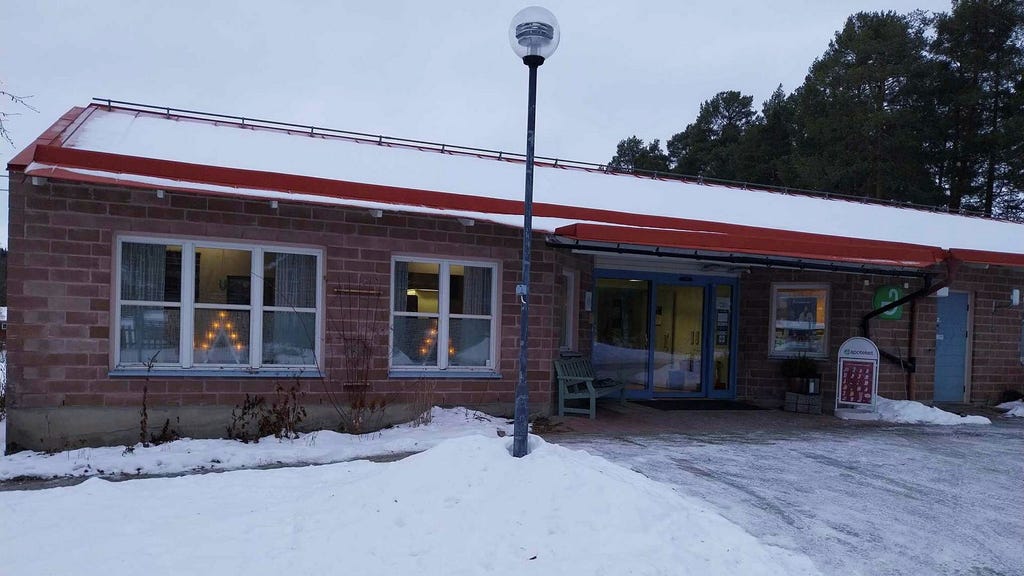A Novel Approach to Rural Healthcare Recruitment: Offerdal’s Allure
The Hälsorum health center, nestled in the picturesque Offerdal region of Jämtland, Sweden, faces a predicament common to many rural healthcare facilities: attracting and retaining qualified medical professionals. Operated by an economic association, Hälsorum serves a modest population of approximately 2,300 patients. While two part-time physicians are currently employed, a significant portion of the medical services relies on locum tenens physicians – a costly and often unsustainable solution. Marie Hermansson, Hälsorum’s verksamhetschef (operations manager) since August, recognizes the urgent need for a permanent physician to stabilize the center’s financial footing. Her innovative approach to recruitment, however, sidesteps traditional financial incentives and instead focuses on the unique lifestyle advantages offered by the region.
Hermansson’s experience as a healthcare manager within the Krokom municipality provided valuable insight into the challenges of rural recruitment. Facing a critical staffing shortage during the summer months, with traditional recruitment efforts yielding no applicants, she pioneered a novel strategy. Recognizing the unsustainable practice of escalating salaries to attract healthcare professionals, she shifted her focus to the non-monetary benefits of living and working in Jämtland. This innovative approach eventually proved successful in attracting nurses, occupational therapists, and physiotherapists to the municipality.
Drawing inspiration from her personal experience, Hermansson reflected on the factors that had prompted her own relocation from Stockholm to Jämtland two decades prior. The allure of a mountain-adjacent lifestyle, coupled with her passion for dog sledding, formed the foundation of her recruitment strategy. Crafting a unique benefits package that included dog daycare and fishing privileges, she successfully attracted and retained essential healthcare personnel within the municipality. This innovative approach not only addressed the staffing shortage but also resulted in significant cost savings by eliminating the need for locum tenens staff during her tenure.
Confronted with a similar challenge at Hälsorum, Hermansson proposed her unconventional recruitment strategy to the association’s board. The board, recognizing the financial strain caused by reliance on locum physicians, readily embraced the concept. The focus shifted from merely offering competitive salaries to showcasing the unique lifestyle opportunities that Offerdal presents. Recognizing that potential candidates might already be content in their current locations, the recruitment campaign aimed to entice those seeking a change of pace and a closer connection to nature.
The recruitment package offered by Hälsorum goes beyond the usual perks. It includes a year’s rent-free accommodation in a house with stunning mountain views, a snowmobile driving license course, the loan of a snowmobile, a fishing license, and a gym membership. These benefits, tailored to the recreational opportunities abundant in Jämtland, aim to attract individuals who value an active outdoor lifestyle. The emphasis is not just on filling a vacancy, but on finding a physician who will thrive in the community and embrace the unique environment.
The initial response to this unconventional recruitment strategy has been encouraging, with several physicians expressing interest. While no appointments have been made as of yet, Hermansson remains optimistic. Her approach reflects a growing recognition within rural communities that attracting and retaining professionals requires more than just competitive salaries. It necessitates an understanding of the lifestyle preferences of potential candidates and a willingness to showcase the unique advantages of living and working in less urbanized areas. The success of Hälsorum’s recruitment efforts could serve as a model for other rural communities facing similar challenges, demonstrating the power of non-monetary incentives in attracting and retaining skilled professionals. The long-term sustainability of rural healthcare may depend on such innovative approaches that recognize the importance of lifestyle and community in professional decision-making.
The story of Hälsorum’s recruitment strategy highlights a shift in perspective, moving beyond the traditional focus on financial compensation. It represents a holistic approach that acknowledges the interconnectedness of professional life, personal interests, and community integration. By offering a glimpse into the unique lifestyle afforded by Offerdal, Hermansson and the Hälsorum team hope to attract not just a physician, but a community member who will contribute to the vibrancy and health of the region.
The emphasis on lifestyle in Hälsorum’s recruitment strategy reflects a broader trend within the healthcare industry, particularly in rural areas. As the competition for qualified professionals intensifies, communities are increasingly recognizing the need to differentiate themselves by offering more than just competitive salaries. Factors such as work-life balance, access to outdoor recreational activities, and a strong sense of community are becoming increasingly important considerations for healthcare professionals.
The innovative approach taken by Hälsorum underscores the importance of understanding the motivations and priorities of potential candidates. By tailoring the recruitment package to appeal to individuals who value a specific lifestyle, the health center increases its chances of attracting and retaining professionals who will thrive in the community. This, in turn, contributes to the long-term stability and sustainability of the healthcare system in the region.
The success of this initiative will not only address the immediate staffing needs of Hälsorum but could also pave the way for other rural communities struggling to attract and retain healthcare professionals. It demonstrates the potential of creative thinking and a community-centered approach to overcome the challenges of rural healthcare recruitment. The Offerdal example highlights the power of lifestyle advantages in attracting talent and serves as a potential blueprint for other rural communities seeking to strengthen their healthcare workforce.
Finally, the Hälsorum approach reflects a growing recognition that the well-being of healthcare professionals is intrinsically linked to the quality of care provided to patients. By creating a supportive and attractive environment for healthcare workers, rural communities can not only address their staffing needs but also enhance the overall health and well-being of their residents. The focus on lifestyle in recruitment is not just about attracting professionals; it’s about building a healthier and more sustainable future for rural communities.














